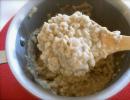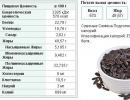What is lactose?
Lactose is a natural sugar present exclusively in dairy products and, of course, milk. Lactose is often also called milk sugar. This name was given to it by the Swedish chemist, the discoverer of a huge number of organic and inorganic substances, Karl Wilhelm Scheele in 1780. He also included it in a series of carbohydrates called “lactose”. Lactose was first isolated approximately 160 years earlier by the Italian researcher Fabrizio Bartoletti.
How is lactose obtained?
The technological principle of lactose production has not changed fundamentally since the time of Bartoletti, who obtained lactose from milk whey by simple evaporation.

Lactase or lactose?
Lactose and lactase differ in much the same way as nail polish and nail polish remover. Without the lactase enzyme, the intestines do not break down the milk sugar lactose. Lactase is produced by the normal microflora of the small intestine: non-pathogenic E. coli, lacto- and bifidobacteria.
What are the benefits of lactose?
Lactose is:
- energy source;
- normalizes calcium metabolism in the body;
- maintains normal intestinal microflora, promoting the growth of lactobacilli, which prevent putrefactive processes in the intestines;
- powerful stimulant of the nervous system;
- means of preventing cardiovascular diseases.
Why is lactose harmful?
Lactose itself is an extremely healthy substance. It can only be harmful if the body is unable to assimilate, digest, or break down it. This condition is possible due to deficiency of the enzyme lactase.
Hypolactasia – lactose intolerance
It is with lactase deficiency that lactose intolerance develops. In this case, it becomes dangerous for the body suffering from so-called lactase deficiency (hypolactasia, lactose malabsorption).
This is a fairly common pathological condition. In European countries, up to 20% of the population does not have enough lactase in the body to fully absorb the lactose contained in milk and dairy products. Europeans are relatively “lucky”: lactase deficiency is almost 100% an Asian problem. Residents of Asia, especially Southeast, Africa and South America, after 3 years, almost completely lose the ability to treat themselves to a glass of fresh milk without subsequent symptoms of food intake.
Lactose intolerance can be primary (congenital) and secondary - acquired. In the first case, it is almost always a hereditary genetic disease.
The following factors influence the occurrence of acquired lactose intolerance:
- past flu;
- surgical operations on the intestines and stomach;
- any inflammatory diseases of the small intestine (for example, gastroenteritis);
- dysbacteriosis;
- Crohn's disease;
- Whipple's disease;
- celiac disease;
- chemotherapy;
- ulcerative colitis.
Symptoms of lactose intolerance
Hypolactasia may be indicated by:
- pain in the stomach and abdomen, accompanied by bloating and flatulence;
- often flatulence leads to flatulence (uncontrolled release of digestive gases);
- observed 1 to 2 hours after a meal containing milk or eating any dairy products;
- nausea;
- rumbling in the intestines.
Milk allergy is not hypolactisia
Lactose intolerance is often confused with milk allergy. These are completely different states. If you have an allergy you can’t drink milk at all, then with hypolactasia it’s all about the amount of milk-containing product that gets into the intestines. With small volumes of milk or dairy products (this volume is purely individual), the body is able to cope with the task of breaking down lactose with the help of a small amount of lactase it produces. Symptoms of lactose intolerance in such cases may be completely absent.
In case of allergies, even a small amount of milk causes symptoms characteristic of allergies:
- skin rashes;
- difficulty breathing, sore throat;
- clear nasal discharge;
- puffiness and swelling of the eyelids.
If you are lactose intolerant, you should not exclude milk and dairy products from your diet. And you should absolutely not do this, since the intestines contain beneficial bacteria that feed on lactose. If they do not receive food, then they will simply all die of starvation, freeing up living space for putrefactive bacteria to multiply, which also contributes to increased gas formation. Plus, you will deprive your body of calcium, even if you get it from non-dairy products: without lactose, the intestines cannot absorb calcium.
For those who are absolutely intolerant to milk sugar, doctors recommend taking calcium in combination with lactase.
The average safe dose of lactose per day in case of its deficiency in the body is about 4.5 g. This amount of lactose is contained in 100 g of milk; in 50 g of ice cream or in 50 g.
Especially for people suffering from lactose intolerance, there is lactose-free milk. Scientists have learned to help the body with its absorption. In lactose-free milk, milk sugar has already been fermented and is contained in the form of glucose and galactose, into which lactose breaks down in the intestines in order to be absorbed without problems.

How to replace milk?
If you are lactose intolerant, you should pay attention to dairy products that contain fermented lactose and do not cause painful and extremely unpleasant symptoms after eating:
- unpasteurized yogurt;
- hard cheeses.
Drink milk during meals, combining it with cereal products.
Limit the amount of milk you drink at one time to 100 ml.
Skim milk does not mean lactose-free milk. This means that there is no fat in the milk, and no lactose at all.
Where else is lactose present?
Many non-dairy foods contain lactose. It is used as a sweetener or as an ingredient in the following products:
- bread;
- diabetic products;
- confectionery products: dark chocolate, sweets, biscuits, marmalade, pastries, cookies;
- condensed milk;
- margarine;
- special cream for, both powder and liquid;
Even if lactose is not listed on the label, keep in mind that any products containing whey, cottage cheese or milk powder, of course, contain lactose in their composition.
Lactose is not only present in dairy products and milk. It is part of some medications, including those intended for the treatment and normalization of the gastrointestinal tract:
- "No-shpa";
- “Bifidumbacterin” (sachets, i.e. bags);
- "Lopedium";
- "Motilium";
- "Gastal";
- "Cerucal"
- "Enap";
- birth control pills.
If you suffer from complete lactose intolerance, carefully read the contents of any medications you take, as the full list of medications containing lactose is much longer.





